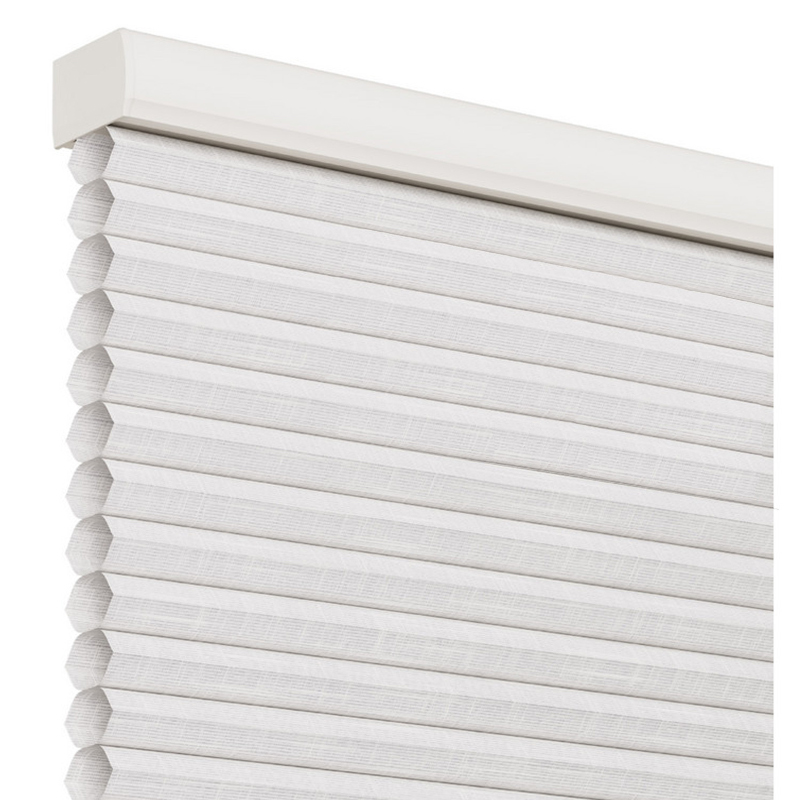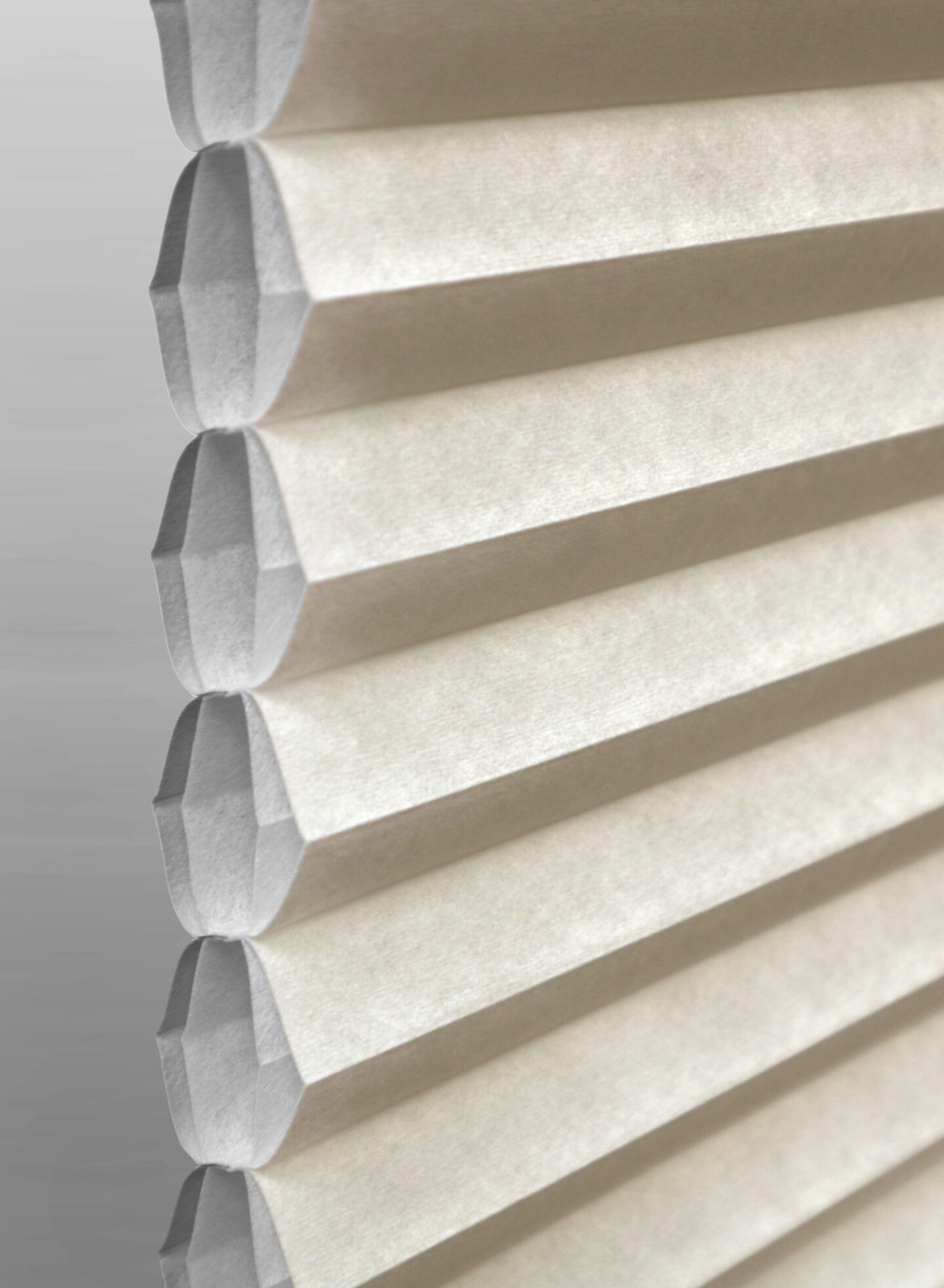As shade experts, we know the importance of finding the right style of window shades for your space in terms of both style and functionality. With our current level of technology and the variety of styles on the market, there’s never been a more diverse, highly-customizable offering of shades to choose from. In other words: it’s a great time to be in the shade industry! That’s why the team at EcoSmart always looks forward to working with our customers one-on-one to find the perfect style– or styles– of shade for their home or office.
Today, we’re exploring two popular styles of Cellular Shade, Cell-in-Cell and Single-Cell, breaking down the pros and cons of each. Let’s dive in.
What Are Cellular Shades?

Before diving into the specifics, let’s define what Cellular Shades are. Also known as honeycomb shades, these window treatments feature a unique design that resembles a honeycomb when viewed from the side that serves the purpose of trapping air in distinct pockets. This insulating design will help keep your home warmer in the winter and cooler in the summer, potentially lowering energy costs.
Single-Cell Shades

The most common type of Cellular Shade, Single-Cell shades consist of one layer of cells. They are a popular choice due to their clean, simple design and effective insulating properties.
Single-Cell Shades come in various cell sizes, allowing for flexibility in meeting different design and insulation requirements. Larger cells are generally better for bigger windows, as they’re often more proportional to the size of the window and offer slightly better insulation due to their larger air pockets.
Pros:
- Cost-effective compared to Cell-in-Cell Shades
- Sleek, simple appearance
- Variety of cell sizes for different needs
Cons:
- Less insulation compared to Cell-in-Cell shades
- May not be as durable over time
Cell-in-Cell Shades

Cell-in-Cell shades, also known as cell-behind-a-cell or double-cell shades, feature two layers of cells, one inside the other. This design enhances the insulating properties of the shade, making them a great choice for extreme climates or for folks looking to prioritize energy efficiency in their home. The additional layer of cells provides not only better insulation, but also increases the durability and sound absorption of the shade.
Pros:
- Superior insulation, saving more on energy costs.
- Increased durability due to their double layer of cells.
- Better sound absorption compared to Single-Cell Shades.
Cons:
- Often more expensive than Single-Cell Shades.
- Can appear bulkier, which might not suit all window types or style preferences.
Making the Choice
Both Cell-in-Cell and Single-Cell shades are popular styles of Cellular Shades due to their streamlined appearance and insulating properties. So, how do you make the choice between the two?
We recommend considering the following factors:
Energy Efficiency Needs
If you live in an area with extreme weather conditions, or if energy efficiency is a top priority for you, Cell-in-Cell Shades might be the better investment due to their superior insulation properties.
Budget
Single-Cell shades are generally more budget-friendly. If cost is a significant consideration, they might be the more suitable option for your space.
Aesthetic Preferences
Consider the look you’re going for: do you prefer a sleeker, more streamlined appearance? If so, Single-Cell shades might be the better choice. On the other hand, if you’re not concerned about the slightly bulkier look of Cell-in-Cell Shades and value their benefits, they could be the style for you.
Window Size and Location
Larger cell sizes are often recommended for bigger windows, making Single-Cell Shades a versatile option for various window types. However, for windows that are particularly exposed to the elements, the extra insulation of Cell-in-Cell Shades could be advantageous.
Both Cell-in-Cell and Single-Cell Shades are excellent options for folks looking for window treatments that feature insulation while remaining stylish and highly versatile. We hope the above guide to their similarities and differences made it clear which style is right for your space.
If it didn’t, don’t fret– reach out to our Shade Gurus for personalized service from Monday to Friday during business hours. Or, take a look at our full collection of Cellular Shades.
